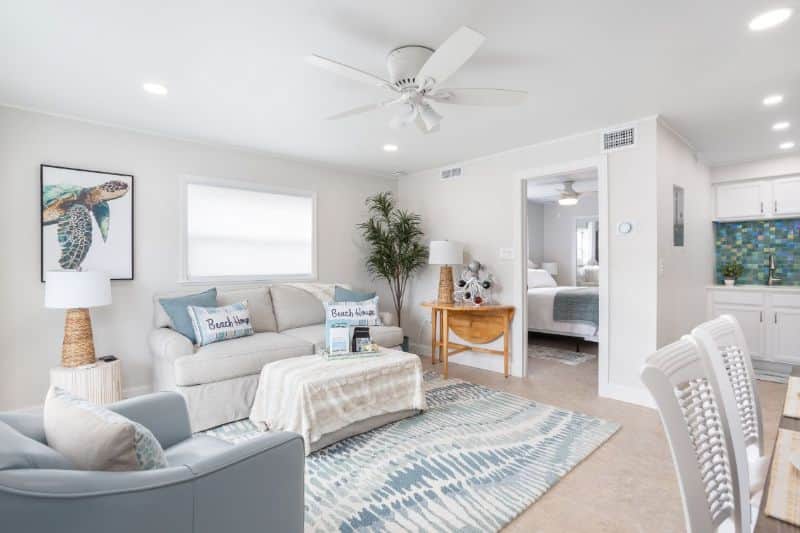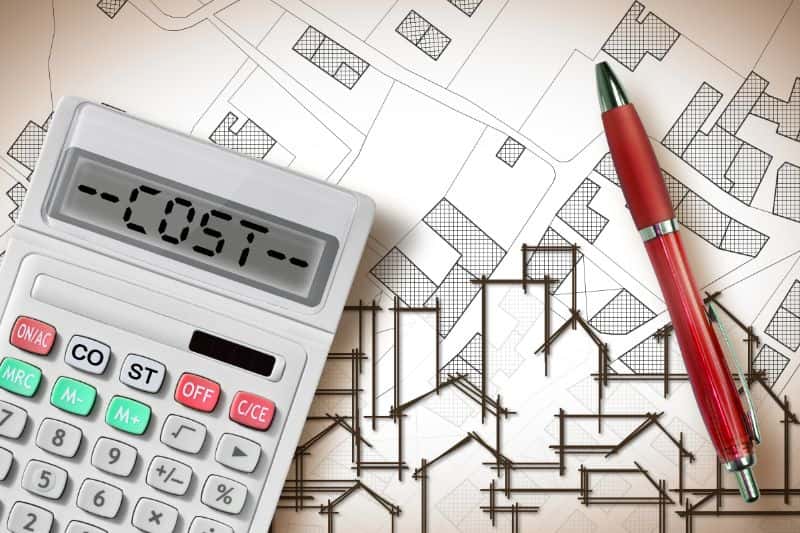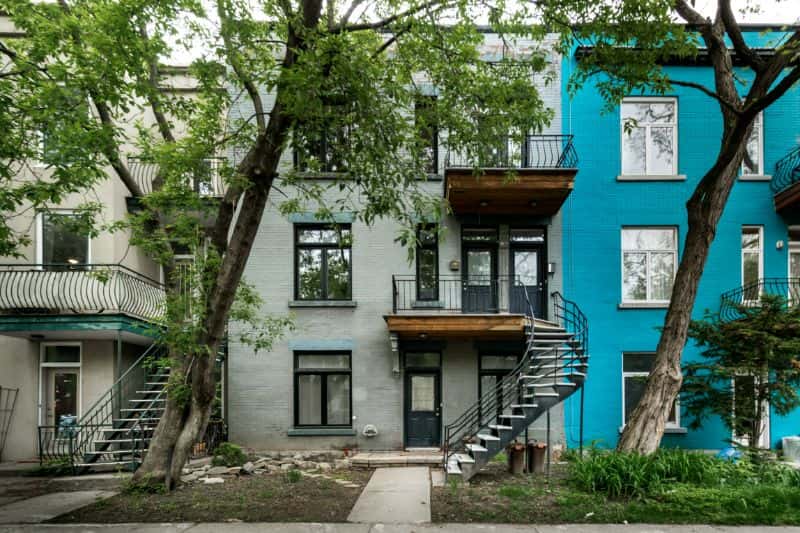
Compare
Real Estate Agents
Ontario 1-613-686-4796
Quebec 1-514-600-6092
ON: 1-613-686-4796
QC: 1-514-600-6092
Compare 3 Real Estate Agents.Find Your Real Estate Agent in 2 mins
+380 Partners across Quebec and Ontario

Compare
Real Estate Agents
Real Estate Agetns Submissions

Need a Real Estate Agent
to buy or sell a property?
Compare 3 Proposals 3 Real Estate Agent in 2 minutes and choose according to your criteria.

Compare 3 Real Estate Agents
Complete the form below and 3 Real Estate Agents will offer you a proposal. Compare: Commission, Service & Personality

Divided vs Undivided Co-Ownership: What is the Difference?

Living in a condominium in Quebec can take different forms. Indeed, there are 2 main types of condominiums in the province which may not be clearly understood by many people.
We are referring to divided co-ownership and undivided co-ownership.
Although the two expressions may sound similar, they are, in fact, completely differently, and it is very important to understand the difference.
Divided co-ownership is more common in multi-unit properties for sale but you should also know that the undivided co-ownership also exists, such as when multiple owners inherit a property. In both instances, the implications on financial responsibilities, legal rights, and lifestyles are different.
In this article, we present everything you need to know about divided co-ownership and undivided co-ownership in Quebec as well as the differences between the two.
Divided vs undivided condo ownership in Quebec

Let’s start with the basics- the distinction between divided and undivided co-ownership. The term “co-ownership” refers to the fact that several people hold a right of ownership in a building.
However, this right of ownership can be expressed differently.
Here is the concrete difference between the two and how they generally work:
Divided co-ownership
The Quebec Professional Association of Real Estate Brokers report that an estimated 12% of properties in Quebec are co-owned properties such as condominium properties.
In a divided co-ownership, a building is divided into several private parts, each belonging to a specific co-owner.
Each condominium owner has the exclusive use of the private part and can also take advantage of the common areas of the building.
For example, a building with 10 private units will have 10 different co-owners.
The building is divided into fractions, and each fraction belongs exclusively to a co-owner. Each co-owner is therefore the exclusive owner of the private portion, and holds a share of the common areas according to the relative value of his unit in the building.
Common areas
A divided co-ownership will also have common areas which may include the following:
- Lot
- Foyer or Lobby
- Exterior walls
- Roof
- Rooftop patio
- Elevator
- Garden
- Pool
The co-owners have equal rights to the use of these common areas and share in the cost of maintaining such common areas by way of “condo fees”.
Some common areas may have “restricted use” with specific portions belonging to exclusive owners such as:
- Parking area
- Storage area
- Units’ balconies
The users are responsible for the maintenance of these areas but the fees for major repairs are paid by the co-ownership as a whole.
We will discuss these points in more detail later in the article.
Undivided co-ownership
In an undivided co-ownership, the building is not divided. Rather, several people will own the same building.
Section 1010 of the Civil Code of Quebec describes this property as not physically divided, with each co-owner owning a percentage of the property rights and the right to occupy the residence.
Each co-owner will be responsible for school taxes and municipal fees.
Since there are several owners, they then become “co-owners” of the building. Most people become joint owners when they buy property with a spouse.
For example, if 4 people buy a house in equal shares as undivided co-owners, their respective shares will be 25%.
A single tax account is assigned for this building and all co-owners are responsible for the payment of taxes.
While no law dictates how common costs are managed, the co-owners must have an agreement about the amount paid each year for the building’s maintenance and a contingency fund. This can be included in an indivision agreement.
How a divided co-ownership operates in Quebec
In order to better understand the distinctions between divided and undivided co-ownership, it is relevant to present the two individually.
Let’s start with divided co-ownership, which is by far the best known and most popular in Quebec.
All condo buildings in Quebec are formed in the form of divided co-ownership. However, the term “condo” has become much more widely used in popular Quebec language.
When you buy a condo in divided co-ownership, you are acquiring a private unit, as well as a share and a right in the common areas of the building.
For example, if you buy a condo in Montreal in a building at a cost of $375,000, the cost of the unit will be entirely your responsibility. You will also have to pay 25% of the annual fees for the maintenance and future repair of the common areas of the condominium.
Divided co-ownership definition – Civil Code of Quebec
According to the Civil Code of Quebec (C.c.Q 1038), the concept of divided co-ownership takes the following definition: “Divided co-ownership is established by the publication of a declaration according to which the ownership of the immovable is divided into fractions […] C.c.Q 1010, para. 3: private, materially divided, and a share of the common parts.”
The private and common portions of the building

Let’s talk in more detail about the concept of private portion and common portion in a divided co-ownership building.
This is a very important concept that you must understand before buying a condo in Quebec.
Basically, when you buy a condo, you:
- Acquire a private unit that belongs to you 100%.
- Also acquire a percentage share of the building’s common areas.
It is the second part that is less understood. Quite often, people imagine that they are only buying the condo in the building. If so, who owns the structure? There is not just one owner of the building structure!
The building structure, the foundations, plumbing, electricity, ventilation, corridors, swimming pool, and the rest belong to all the co-owners of the building. The liability of each co-owner with respect to common areas is calculated as a percentage, based on the relative value of each unit in the building.
This brings us to the concept of relative value, also called “quota”.
Calculating the relative values for each co-owner

To determine the share of each co-owner in a building, a mathematical calculation is necessary.
First of all, these shares are often fixed at the creation of the co-ownership. You need to know the value of each private unit.
From the value of each private unit, the total value of the building is calculated.
The value of each private unit is then divided by the total value of the building to determine the relative share.
Thus, with this method of operation, larger condos occupying more space in a building pay a greater proportion of the maintenance costs of common areas. It’s completely reasonable, by the way.
The following example presents the calculation of the quota shares for a building in divided co-ownership of 8 units.
Calculation of the relative value of a condo
Value of the private unit / Total value of the building (sum of the private values) = Share
Condo Unit | Value of the unit | Total Value of the building | Relative value (Share) |
1 | $365,000 | $3,847,000 | 9.49% |
2 | $418,000 | $3,847,000 | 10.87% |
3 | $280,000 | $3,847,000 | 7.28% |
4 | $789,000 | $3,847,000 | 20.51% |
5 | $390,000 | $3,847,000 | 10.14% |
6 | $510,000 | $3,847,000 | 13.26% |
7 | $450,000 | $3,847,000 | 11.70% |
8 | $645,000 | $3,847,000 | 16.77% |
Syndicate of co-ownership and administrators in divided co-ownership

Now let’s talk about managing a divided co-ownership. Since a condominium is made up of several different co-owners, an independent structure is needed to manage the building.
In a divided co-ownership, at the time of its creation, a syndicate of co-ownership is legally created which is responsible for managing the co-ownership. This includes:
Regular maintenance management
Planning component repairs and replacements
Management of condominium finances
Condominium insurance management
Etc.
The union is, in fact, a legal entity in the eyes of the law. This is made up of a board of directors. The administrators are voted in assembly by the co-owners of the building. It can be a voluntary co-owner or even specialized firms contracted externally.
The syndicate and its directors have the mission of ensuring the proper maintenance and sound financial management of the building.
What is the provident fund?
The contingency fund is where the co-owners’ share and the liability of the syndicate merge.
For the syndicate of a divided co-ownership to accomplish its mission of maintaining the building, it must have money. It is, therefore, necessary to calculate, using a study, the annual maintenance amounts that are necessary for the building. It is also necessary to calculate the future replacement cost of the various common components of the building, for example the roof, the parking lot, the exterior cladding, etc., and amortize it over their useful life.
Subsequently, the annual amount needed by the syndicate will be divided according to the relative shares of each co-owner. Thus, each co-owner will have to pay an amount per month, corresponding to his share of the common areas.
Condo Unit | Share | Annual Amount Paid to the Union | Annual Condo Fees |
Condo 1 | 9.49% | $15,000 | $1,423.50 |
Condo 2 | 10.87% | $15,000 | $1,630.00 |
Condo 3 | 7.28% | $15,000 | $1,092.00 |
Condo 4 | 20.51% | $15,000 | $3,076.50 |
Condo 5 | 10.14% | $15,000 | $1,051.00 |
Condo 6 | 13.26% | $15,000 | $1,989.00 |
Condo 7 | 11.70% | $15,000 | $1,755.00 |
Condo 8 | 16.77% | $15,000 | $2.515.00 |
What are the condo fees used for in a divided co-ownership?

Why do I have to pay condo fees? This is a question that comes up often. Well, the answer is simple: the building is not going to maintain itself.
When you buy your condo, it doesn’t come with a free unlimited maintenance package. Like a house, there is maintenance to be done on the building, and repairs to be planned.
The co-owners must therefore pool funds to cover various maintenance expenses.
It is in the contingency fund that these sums are put, which are used in particular to:
- Pay for the maintenance of corridors, entrances and circulation areas
- Pay for the maintenance of outdoor spaces
- Pay for the maintenance of common areas (terrace, swimming pool, etc.)
- Accumulate money to cover repairs and replacements of building components in the short, medium and long term
In short, it is a mechanism that simplifies the financial management of the building. It is then the syndicate that administers the sums collected via the “condo fees”.
Divided co-ownership insurance – What are the obligations?
Now let’s talk about home insurance. In a divided co-ownership, it must be understood that the insurance is divided into 2 levels of protection, an individual policy for each co-owner, and a policy that the syndicate takes out for the entire building.
Let’s see the difference between the two:

Assurance copropriétaire
L’assurance copropriétaire couvre la responsabilité civile du copropriétaire, les biens meubles et les améliorations locatives faites dans l’unité. Cette police est généralement relativement abordable.

Assurance du syndicat
L’assurance du syndicat couvre le coût de reconstruction à neuf du bâtiment, incluant les unités privatives dans leur état original. Elle couvre aussi la responsabilité civile des administrateurs. Cette police couvre donc tous les espaces communs de l’immeuble, contre une multitude de sinistres.
Bill 141 condo – New rules surrounding condominium insurance in Quebec

Since 2020, Law 141 has brought a series of new insurance rules for divided co-ownerships. Here are the most important:
- Every 5 years, the syndicate of co-ownership must have the cost of rebuilding assessed to establish the fair amount of insurance.
- A self-insurance fund should be established to accumulate an amount equal to the highest level of insurance deductible.
- Civil liability insurance must be taken out by the co-ownership syndicate.
- A descriptive register of the private portions must be put in place, to distinguish the improvements made by the co-owners.
Law 16 condo: The new rules simplified
For decades, the management of condominiums in Quebec was relatively unregulated. This has resulted in many problems, conflicts, and even scandals.
To remedy the situation and provide a more efficient system, the Government of Quebec adopted Bill 16 in 2020 which provides a stricter regulatory framework for condominium syndicates.
Be familiar with all the new rules of Law 16 for divided co-ownerships:
Every 5 years, syndicates of co-ownership must have a contingency fund study carried out by a certified inspector.
A book and a maintenance schedule will also have to be set up, grouping together the list of subcontractors, the list of work to come, the directory of guarantees, etc.
Following a meeting, the syndicate will have 30 days to send the minutes to the co-owners.
At the request of a buyer, a certificate of the condition of the building must be provided by the seller.
A better distribution of responsibilities vis-à-vis the common areas will have to be made between the syndicate and the co-owners.
The syndicate will be obliged to provide the documentation surrounding the management of the co-ownership to potential buyers.
Provident fund study for divided co-ownership in Quebec
From now on in Quebec, all divided co-ownerships will have to have a contingency fund study carried out every 5 years.
What is a provident fund study?
This is a study under which a building professional will inspect a condominium building, in order to create a financing plan to compensate for the maintenance and replacement of each of the components of the building.
This study must be carried out by a professional certified by the government, and respecting the RGCQ standards.
Make sure that your condominium has completed its contingency fund study so that its finances are in order and in the most efficient state.
How undivided co-ownership works in Quebec
Now let’s talk about undivided co-ownership, the least known, in Quebec.
Undivided co-ownership occurs when two or more people buy a property together. Whether or not they buy the building in equal shares, they then become co-owners in joint ownership.
They then bear the name of co-owners. They are then all co-owners of the entire building, and NOT of a private portion as is the case with divided co-ownership.
Each co-owner then has a share in the entire building.
For example, if you buy a house with your spouse, you will be joint and equal owners. If you and 3 other friends buy a chalet, you will then be joint owners at 25% each, unless otherwise agreed. It is possible to establish totally different and unequal shares between the co-owners.
Undivided co-ownership Civil Code of Québec – Definition

Generally, when a property is owned by a group of people without being divided into separate fractions or lots, this building is then considered an undivided co-ownership. The Civil Code of Quebec also provides many articles about undivided co-ownerships.
Joint ownership agreement for undivided co-ownership
It is not mandatory in Quebec to set up an undivided co-ownership agreement when buying a property with other people.
On the other hand, it is very strongly recommended, because it can greatly simplify the steps between the co-owners at the time of the sale, or in the event of conflicts.
The joint ownership agreement is a document prepared by a notary and signed by all joint owners. This contains in particular:
- The description of the parts reserved for the exclusive use of a co-owner
- The rules surrounding the administration of the co-ownership
- The rules in the event of the will to share of one of the co-owners
- Etc.
This agreement harmonizes and structures the relationship between the co-owners.
How to determine the shares of the various joint investors?
In joint ownership, the shares of each co-owner may be different. For example, 4 people can buy an income property. Two people own 40% each of the building, and the other two 10% each. That’s a possibility. The determination of interest holders’ shares is a personal choice that depends on each project, based on the capital invested for the down payment, and many other factors.
Undivided co-ownership examples in Quebec
Since undivided co-ownership is a somewhat obscure concept for some, we have decided to share 3 concrete examples of situations where undivided co-ownership may exist.
Income Property

Thomas, Chantal, Josée, and Pierre have been very good friends for 25 years. They want to buy an income property together, but they don’t all have the same money set aside. Pierre holds most of the capital for the down payment. They, therefore, decided to divide the shares according to the proportion of the down payment injected into the building by each person. In this way, Pierre holds a 50% share, Chantal 20%, Thomas 15%, and Josée, 15%. They will then have to have a joint co-ownership agreement drafted to formalize everything.
Partnership

Pierre-Luc and Sophie have been partners for 5 years. They have just bought their first home in Laval, each with half of the necessary down payment. Without having to go to the notary or write a joint co-ownership agreement, they will then have 50% of the shares, undivided.
Multi-generational house

Yvan and Julie want to buy a multi-generational house with their son, Marc-André, and his wife Marie.
They found a property suitable for two dwellings, one occupying 60% of the building area, and the other 40%.
For it to be equal, they then decide to buy the property as joint owners by basing the shares on the area that each will occupy. Yvan and Julie will have the largest share, and will therefore have respective share of 30% each.
Marc-André and Marie will have shares of 20% each, since they will occupy the smallest part. The down payment will also be calculated according to these proportions. Of course, they still hold their share of the entire building, but they will occupy parts for “exclusive” use (not to be confused with private for split condos).
How to sell an undivided co-ownership?
How can persons holding an undivided immovable sell it? According to article 1026 paragraph 2 of the Civil Code of Québec:
“In undivided co-ownership, only a unanimous vote of the co-owners can sell the property held undivided.”
Civil Code of Quebec
In some joint undivided agreements, there may be additional rules regarding the pre-emptive rights of co-owners, and much more.
Important distinctions between divided vs undivided condo
We hope that you now have a better understanding of the important distinctions between divided and undivided co-ownership in Quebec.
We have prepared this summary table presenting the main characteristics of the two types of condominium.
If you have any questions about this topic, please contact us by filling out the form below. We will be happy to put you in touch with one of our broker partners near you.
Divided Co-ownership | Undivided co-ownership | |
Declaration of Co-ownership | Joint ownership agreement | |
Definition | Holds the exclusive use of a private unit in a building, as well as a share of the common areas | Holds a share of the entire property, regardless of its use (house, duplex, cottage, etc.). |
Share | 100% private part, and variable share common space | Share for the entire property |
Provident Fund | Yes | Yes |
Condominium Fees | Yes | No |
Subject to Law 16 | Yes | No |
Subject to Law 141 | Yes | No |
Selling the property | Easy | More complex |
Thinking of selling or buying a divided or undivided co-ownership? Ask the experts for advice

Are you planning to buy a divided or undivided co-ownership in Quebec in the near future? Are you thinking of selling your property?
Did you know that real estate brokers are condominium specialists and that they can answer all your questions related to your project?
Simply fill out our free form to get up to 3 proposals from real estate brokers specializing in condominiums in your area!
Compare the profiles, agencies, and experience of different brokers or agents to make an informed and wise choice.
Just click the button below to request free quotes and start comparing now.
RECEIVE PROPOSALS FROM 3 PASSIONATE AGENTS AND CHOOSE FREELY THE BEST ONE FOR YOU
Buying or selling a property has a direct impact on your budget and your quality of life. This is why it is so important to have the right person assisting you. Use our service to find a real estate professionnal who truly meets your expectations.


Compare 3 Real Estate Agents
Complete the form below and receive proposals from 3 real estate agents. Compare : Commission, Service and Personality
